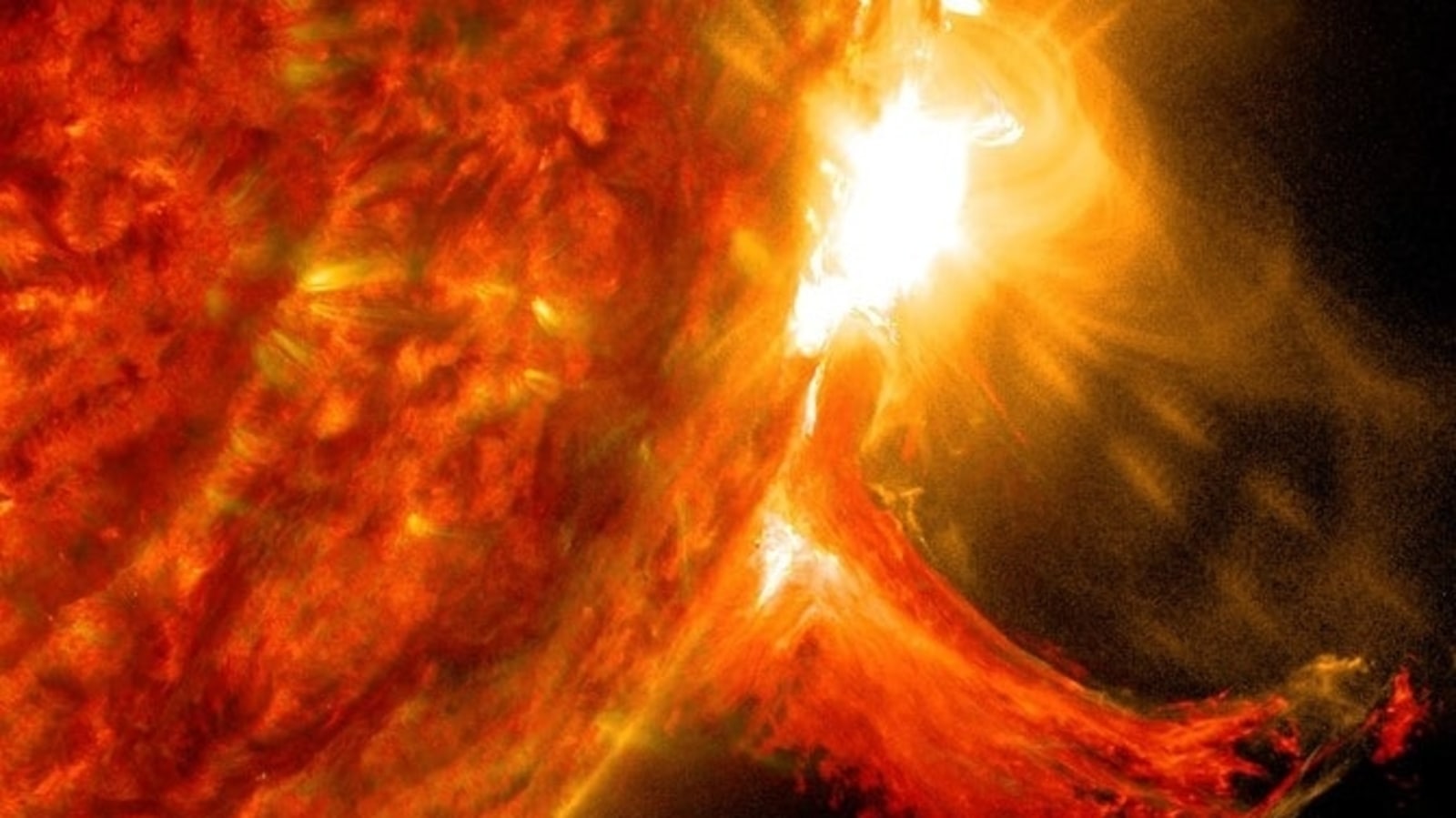Terrifying solar flare sparks BLACKOUTS in US, Canada; NASA satellite spots blast
An X-class solar flare erupted yesterday, June 20, revealed the NASA Solar Dynamics Observatory. It sparked a shortwave radio blackout over North America including the US and Canada.






 View all Images
View all ImagesEarlier, it was reported that solar winds were expected to hit the Earth today, June 21, but so far, it has not reached our planet. However, a bigger threat struck the Earth in the late hours last night when a powerful solar flare explosion occurred on the Sun. The X-class solar flare eruption took place on a new sunspot named AR3341, and the impact of the flare was so strong that it sparked shortwave radio blackouts over the North American continent, including major parts of the USA and Canada. Further, a coronal mass ejection (CME) cloud was also seen escaping, which has the researchers worried.
According to a report by SpaceWeather.com, “New sunspot AR3341 erupted on June 20th, producing an X1.1-class solar flare. Radiation from the flare ionized the top of Earth's atmosphere. This caused a deep shortwave radio blackout over North America”. The report also mentioned that aviators and amateur radio operators could have noticed a loss of signal “at frequencies below 30 MHz for as much as 20 minutes after the flare”.
Solar flare sparks blackouts on Earth
The most concerning part about the solar flare eruption is the presence of a CME, which was also confirmed by the report. NASA Solar and Heliospheric Observatory (SOHO) detected a “bright and fast” CME leaving the blast site. Early predictions state that the Earth may not be in its strike zone, however, nothing can be said for certain till NOAA prediction models arrive.
The CME from the X-class solar flare has been classified as Type II solar radio emission and these are strong enough to even bring G5-class geomagnetic storms to Earth. These are powerful enough to not only disrupt GPS, wireless communications, and radio waves but also damage power grids and sensitive electronics such as pacemakers and supercomputers. A geomagnetic storm needs to be extremely strong to actually damage surface-level electronics, radios, and other wireless communications, but if it is, it can have extremely dangerous consequences for humanity.
How NASA Solar Dynamics Observatory monitors solar activity
The NASA Solar Dynamics Observatory (SDO) carries a full suite of instruments to observe the Sun and has been doing so since 2010. It uses three very crucial instruments to collect data from various solar activities. They include Helioseismic and Magnetic Imager (HMI) which takes high-resolution measurements of the longitudinal and vector magnetic field over the entire visible solar disk, Extreme Ultraviolet Variability Experiment (EVE) which measures the Sun's extreme ultraviolet irradiance and Atmospheric Imaging Assembly (AIA) which provides continuous full-disk observations of the solar chromosphere and corona in seven extreme ultraviolet (EUV) channels.
Catch all the Latest Tech News, Mobile News, Laptop News, Gaming news, Wearables News , How To News, also keep up with us on Whatsapp channel,Twitter, Facebook, Google News, and Instagram. For our latest videos, subscribe to our YouTube channel.





























